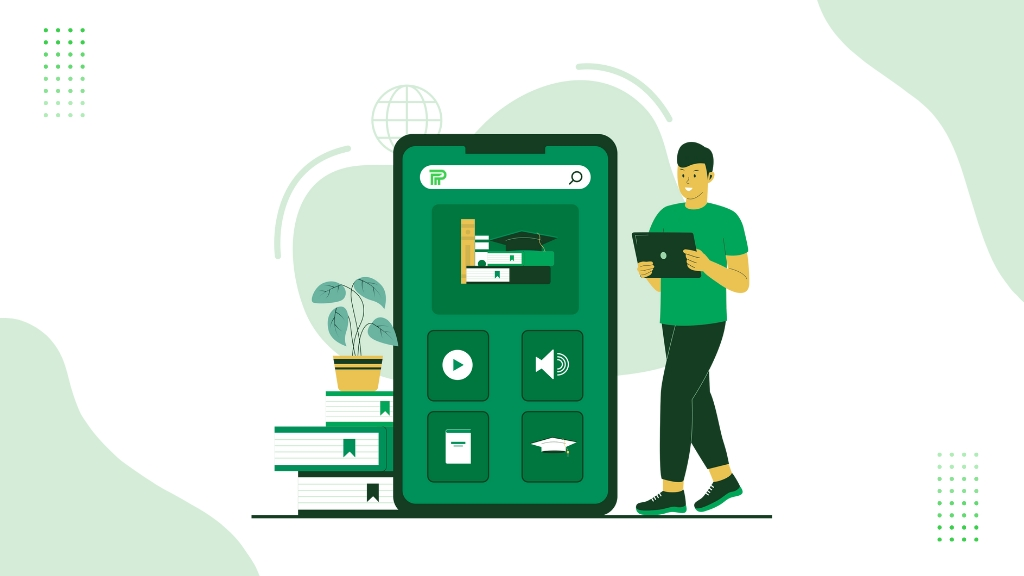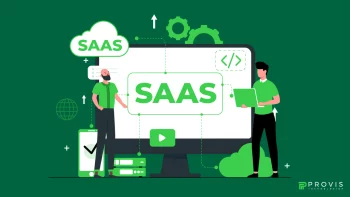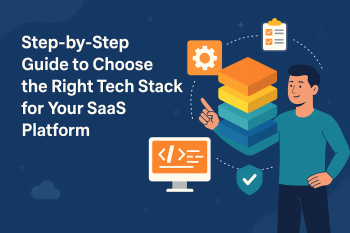Technology has transformed every aspect of our lives, so how will the education market be left behind? Reports suggest that e-learning market revenue is expected to reach $14.65 billion by 2028. So, if you are into educational or related businesses, it’s the best time for you to enter the market with a custom education app and generate revenue for your business.
We have curated this blog with all the relevant and comprehensive information regarding the development of educational applications, along with the features and the cost of development.
KEY FEATURES OF A CUSTOM EDUCATION APPLICATION
Indeed, the features of any given education app development largely determine its degree of success. Ideally, there should be student, teacher, administrator, and parent editions covered in the app.
User Profiles and Dashboards
A user profile and a dashboard for personalized learning hold great importance in an education app. The users can indeed be categorized into the roles of students, teachers, and administrators, which call for different functionalities.
- Student Profiles: A sample of the items that should be included are the academic history, course progress, achievements, and recommendations.
- Teacher Profiles: Let the educators control the courses offered and the student’s performance, as well as communication with the students and their parents.
- Admin Dashboards: Give the administrators ways of operating and handling users, courses and content, analytics, and reports.
Course Management
Sound management, of course, is the foundation of any education app that is being developed. This feature will help educators design, structure, and carry out the courses in a very efficient way.
- Course Creation: Facilitate instructors in creating courses, posting content, and modality of lessons that incorporate multimedia, quizzes, and assignments.
- Course Catalog: Develop a course registration system where students can search through the course list and register for courses that interest or meet the course’s requirements.
- Progress Tracking: Monitor the progress of students in the course, inclusive of the completion rates, the quiz scores that have been taken, and assignments that have been submitted.
Interactive Learning Tools
For purposeful motivating learning, an education app should have efficient and effective learning features that will make the learning process a bit more fun.
- Video Lectures: Videos that can be accessed at the student’s convenience in case they miss a class.
- Live Classes: Real-time virtual classrooms involving videos and image sharing, whiteboards, and video conferencing.
- Quizzes and Assessments: Quizzes, tests, and assignments should be adopted so that they may help the teacher gauge the level of understanding of the students as well as give the students instant feedback.
- Gamification: Engagement techniques should include badges, leaderboards, and awards to reward the participants for their active participation.
Communication and Collaboration
Since it is important to have a connected community, they must use the right communication and collaboration tools.
- Chat and Messaging: Provide an option for students and teachers to send messages and use a group chat or forums.
- Discussion Boards: Support student-to-student communication and student learning through the evaluation of class message boards and group activities.
- Notifications: Utilize push notifications, emails, or in-app notifications to inform users about upcoming deadlines, new announcements, or changes in course information.
Content Management System (CMS)
CMS is highly necessary for make administration of the educational app development material within the app. It enables the developers, mainly the educators, to prepare the content of their learning material and manage their course by inserting, modifying, and categorizing the content in different forms of presentation.
- Content Upload: Support various formats, texts, videos, PDFs, and interactive content.
- Content Organization: Divide the content into modules known as chapters as well as topic sections for ease of learning and System organization.
- Version Control: Enable tracking of modifications for the content and make changes and amendments easily.
Analytics and Reporting
There are ways to optimize and report results such that educators and administrators can stick to evidence-based to monitor, assess, and evaluate performance.
- Student Analytics: Take a record of the results and general performance of students to know their frequency of involvement and opportunities for shortfall.
- Course Analytics: Compare the data based on Prospective Student engagement, course completion rate, and feedback received from students.
- Reports: Write working notes regarding how each learner dealt with or how a group or function was as well as Learning achieved.
Multilingual Support
At the moment, the world has become a global village, and offering support in multiple languages is the most effective way to increase the use of your educational app development.
- Language Selection: Enable a user to choose the language desired from a list of languages offered.
- Localization: The content should also be culturally appropriate and the translation should be in a way that is suitable for the regions.
Security Features
Security is embraced and becomes a then utmost constraint, particularly when the data or records to be processed contain the people’s details and their performance as per their academic records.
- Data Encryption: Safeguard the user data through end-to-end encryption so that nobody can see the data of the user.
- User Authentication: Security measures when identifying the user should include logging in safely into the application, 2FA, and biometrics should be implemented.
- Compliance: Ensure the app provides a guarantee about rights and regulation of data protection of the country such as GDPR of FERPA.
Don’t Miss:- A Step-by-Step Guide for FinTech App Design With Expert Tips
CUSTOM EDUCATION APP DEVELOPMENT AND COST FACTORS
Custom-ready education app development is not an easy decision, and the cost of such a project can vary significantly, even within specific factors. Below are some of the key elements that influence the overall development cost:
App Complexity
One significant factor that defines the cost is the level of complexity of the intended app. Complexity, in this context, means additional features that are not burdensome individually but which are apart from the fundamental purpose of the application.
Features such as user profiles, course catalogs, content management systems, etc, are relatively inexpensive. The more complex custom education app development that allows customers to stream live videos, interconnect with others, or get recommendations from artificial intelligence and others is of higher cost.
Platform Selection
Another consideration on which the cost will differ is the operating system on which the app is going to be developed. The costs of developing an application customized for a particular operating system, iOS or Android are less than the costs of developing an application that is suitable for both operating systems.
Design and User Experience
Much attention should be paid to such factors as the interface and usability of the education app development, as it is crucial to attract the audience’s attention to your app. If the app is well designed, easy to use, attractive, and easy to comprehend, customers will, in the same way, stay on the app.
Design, animations, and any other shiny and attractive things cost a lot of money but are in the long end, expensive and worthy of implementation.
Development Team
The size of the development team is also used in standardizing the cost of the software; this entails the number of staff employed for the software and educational app development. Using skilled developers, designers, and project managers who will be employed only during a specific project will be safer and will ensure the production of quality solutions, but this kind of option will be more expensive.
It is also necessary to take into account working in what country the development team is located—those developers who are located in North America or Western Europe will cost more than, for example, developers from Eastern Europe or Asia.
Third-Party Integrations
The use of third-party services and API such as payment gateways, video conferencing, and analytic API helps in increasing the development cost. That is why such integrations can bring more functions to the app, at the same time extending the development time and resources required.
Post-Launch Support and Maintenance
The application must be updated and upgraded simply because it has some bugs or it is lacking in some features, not to mention the need to be compatible with the newer releases in the operating systems.
Must Know:– Choosing the Right Strategy for Your App Development Cost
CUSTOM EDUCATION APP DEVELOPMENT AND COST ESTIMATES
While the cost of developing a custom education app development can vary widely based on the factors mentioned above, here are some general estimates:
Although it is rather challenging to give specific numbers regarding the average cost estimate of the custom education app development, below is the general breakdown of the costs related to the development of these apps:
- Simple Education App: Anywhere between $20000 and $50000.
- Moderately Complex Education App: Candidate expects to earn between fifty thousand dollars and one hundred thousand dollars.
- Highly Complex Education App: Between one hundred United States dollars and or more and two hundred thousand United States dollars and or more
These estimates consider the design and development of a product as well as the testing of product prototypes and product implementation after the dissemination of the software program to the users. All costs are calculated as approximate estimates, and the final cost will depend on the nature of the work done.
Also Read:– How to Create an App Using AI/ML for Your Business
POLICIES FOR REDUCING THE COST OF DEVELOPMENT
If you’re working with a limited budget, there are several strategies you can use to reduce the cost of a custom education app development. When the budget is constrained, some tips can help to save money while creating a custom education app:
Prioritize Features
Focus largely on obtaining those features that bring so much benefit to the users. Get the product into the market with the basic number of features and then gradually polish it according to the feedback received.
Choose Cross-Platform Development
Using cross-development may also be helpful because it would take less time to develop an application, which will be functional on all the platforms. For cross-platform education app developments, two major frameworks are quite popular: Flutter and React Native.
Use Pre-Built Modules
Make more often set items, for example, users’ identification, payments, or notifications, implemented with software templates. This can be an advantage compared to building these features from the ground up if the aim is differentiated usage.
Outsource Development
Consider outsourcing development to a country where you can hire mobile app developers at a cheaper cost. Currently, there is a wealth of qualified teams that can be found in Indian, Asian, and Latin American countries at significantly lower costs than that of NA or WE teams.
Related Blog:- How to Choose a Mobile App Development Framework: A Beginner’s Guide
CONCLUSION
All individuals working for the institution, as well as other clients, may have unique needs. Provis Technologies, being a leading education app development company, understands the environment of the education sector and works to deliver solutions that fit every company. We aim to provide tailor-made ed-tech products that will better the learning experience. Our app developers strive to provide more than what is expected while having a good understanding of the need.
Written By
Author's Picks
- A Step-by-Step Guide for FinTech App Design With Expert Tips
- 27/08/2024
- Top 10 Mobile Usability Issues and Solutions to Fix Them
- 22/08/2024
- Elevating E-commerce with Mobile App Development | A Comprehensive Guide to E-commerce Apps Development
- 10/04/2024
Categories
- AI for Startups
- AI in Web Development
- AI Integration
- AI Platforms
- AI Prompt
- AI Tools
- AI Trading Software
- Android App
- Android vs iOS Development
- Angular
- API
- API Development
- App
- app development
- App Idea
- App User Feedback
- Application
- Artificial Intelligence
- Audit Services
- Automotive Industry
- Awards and Recognition
- Business Consulting
- Business Website
- Chatbots
- CRM
- CRM for Financial Advisors
- Custom CRM
- Custom SaaS
- Custom Website
- Customer Service
- dashboard design
- Developing a Mobile App
- Digital Business
- E-commerce
- EMR Integration
- Finance
- Financial Advisors
- Financial Advisors
- GIT
- Health Insurance
- iOS App
- iOS App Development
- IoT Mobile App Development
- IoT Platforms
- IT Audit Services
- IT Consulting
- IT Strategies
- Java Development
- Laravel
- Lean Canvas
- Learning Management System
- Logistics Apps
- Mobile App Development
- MVP
- Native App
- News Aggregator Site
- OTT
- Outsourcing IT
- Payment Gateway
- predictive analysis
- Product Launch Strategy
- Progressive Web App (PWA)
- Prototype
- Recommender Systems
- Ruby
- SaaS
- SaaS Application
- SaaS Business
- SaaS Company
- SaaS Development
- SaaS Product
- SaaS Project
- Sales Funnel
- SEO
- Shopping Cart
- Software Development
- SSL and TLS
- Startup Checklist
- Technology
- Tetradic Color Scheme
- UI/UX Design Company
- Unit Testing
- User Flow
- User Testing
- Web Development
- Web Performance Optimization
- website Maintenance Services
- Website Migration Service
- Website Speed Optimization
- WooCommerce
- WordPress





